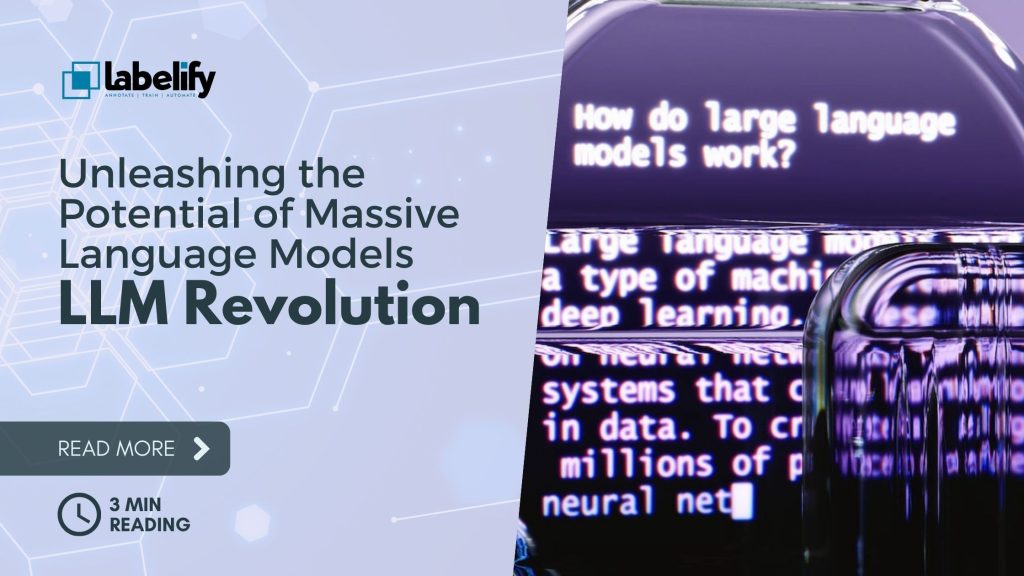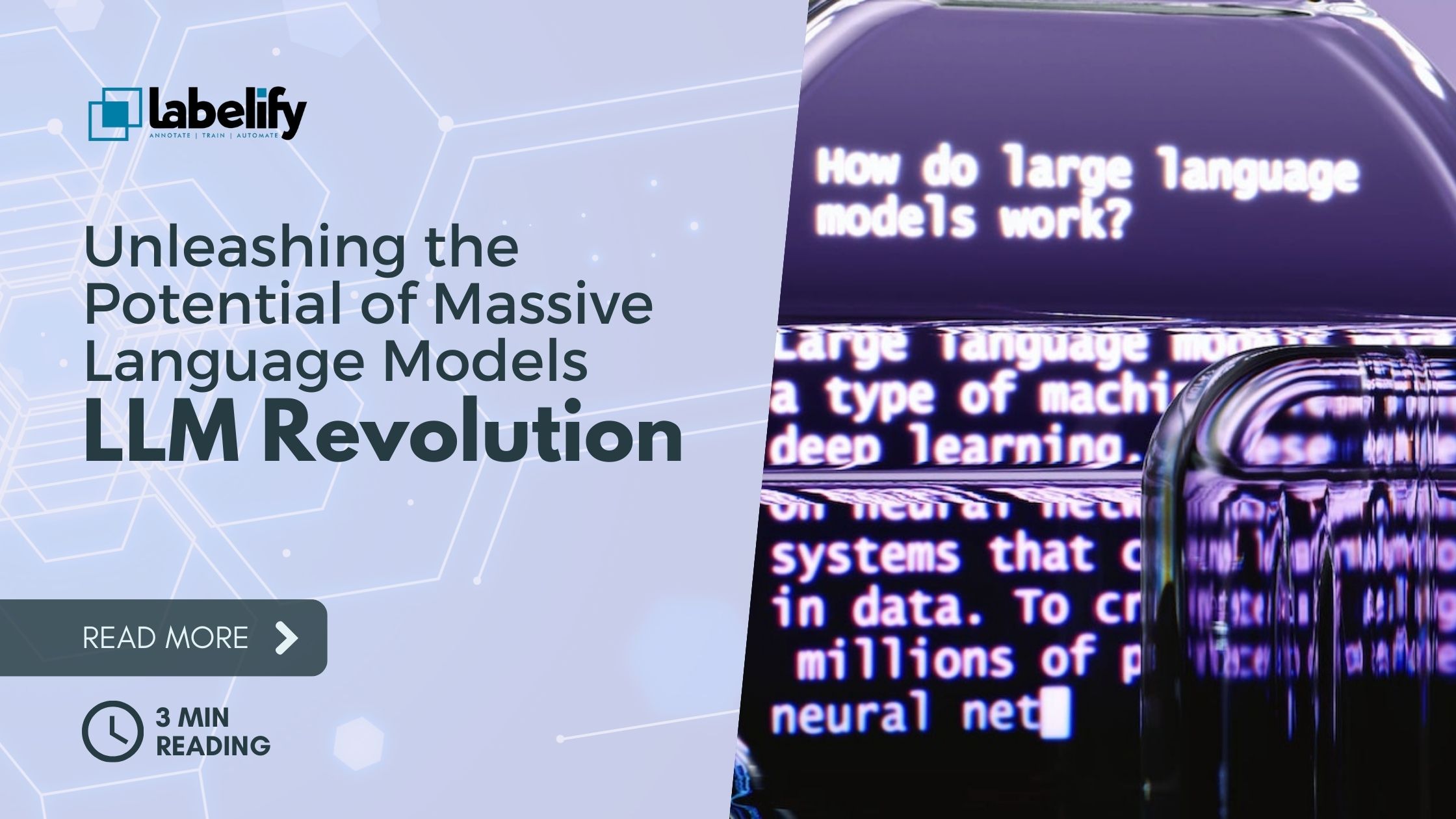
Welcome to the exciting world of Large Language Models (LLMs), where we unlock the transformative power of language processing.
LLMs, AI-based models trained to understand and generate human language, are revolutionizing the way we interact with technology. From chatbots to content generation tools, their thorough grasp of grammar, context, and semantics is reshaping industries.
Join us on this liberating journey as we delve into the inner workings, explore different architectures, and discuss the impact and future of LLMs.
Get ready to embrace the language revolution!
Table of Contents
Key Takeaways
- Large Language Models (LLMs) are AI-based models trained to process and generate human language.
- LLMs leverage deep learning techniques and vast amounts of training data.
- LLMs have a thorough understanding of language structures, grammar, context, and semantics.
- LLMs are revolutionizing the landscape of natural language processing tasks.
The Rise of Large Language Models
We have witnessed an exponential growth in the adoption and utilization of large language models (LLMs) in recent years. These models, powered by transfer learning, have revolutionized the field of natural language processing. With their ability to understand and generate human language, LLMs have opened up new possibilities for text generation.
They’ve become indispensable in applications such as chatbots, AI search engines, and content generation tools. Through their advanced understanding of language structures and context, LLMs have liberated us from traditional language processing constraints.
This rise of LLMs has paved the way for a future where communication between humans and machines is more seamless than ever before. As we continue to explore the potential of LLMs, their impact on various industries will only grow, empowering us with new ways to interact and create.
Understanding How LLMs Work
To comprehend the functioning of Large Language Models (LLMs), one must delve into the intricate workings of these AI-based models. Here’s a glimpse into how LLMs work:
- Data Training: LLMs learn from vast amounts of text data, absorbing language structures, grammar, context, and semantics. They rely on this diverse training data to enhance their language processing capabilities.
- Neural Network Understanding: LLMs utilize transformers, a type of neural network architecture, to analyze relationships between words and phrases in text. These transformers enable LLMs to quickly grasp the meaning behind the text and generate human-like language.
- Simultaneous Analysis: Transformers process language by simultaneously analyzing multiple words and phrases, allowing them to capture intricate connections and nuances in the text.
- Revolutionizing NLP: LLMs, through their data training and neural network understanding, are revolutionizing natural language processing tasks. They’re powering chatbots, AI search engines, and content generation tools, liberating us from traditional language processing limitations.
LLMs hold immense potential to shape a future where humans and machines communicate naturally, offering a transformative way to interact with technology.
Exploring Different LLM Architectures
One of the key aspects to consider when delving into the realm of Large Language Models (LLMs) is the exploration of different LLM architectures. These architectures play a crucial role in shaping the capabilities and performance of LLMs.
Two prominent architectures that deserve attention are the encoder-decoder and transformer architectures.
The encoder-decoder architecture, based on recurrent neural networks (RNNs), is adept at solving sequence-to-sequence tasks like machine translation and text summarization. However, it faces challenges with long-term dependency and sequential logic.
On the other hand, the transformer architecture offers advantages such as an attention mechanism and parallelization, enabling quick analysis of relationships between words and phrases in text. This architecture has gained significant hype in natural language processing.
In a comparative analysis, the encoder-decoder architecture shines in sequence-to-sequence tasks, while the transformer architecture excels in processing language with speed and efficiency.
Understanding the pros and cons of different LLM architectures is vital for harnessing the full potential of these powerful language models.
The Impact of LLMs on Industries
As we delve into the impact of LLMs on industries, it becomes evident that these powerful language models have revolutionized various sectors with their transformative capabilities. Here are four ways LLMs are reshaping industries:
- Advances in customer service: LLMs enable more efficient and personalized interactions with customers. They can understand and respond to customer queries, provide recommendations, and even handle complex problem-solving tasks. This enhances the overall customer experience and increases customer satisfaction.
- Enhancing content creation: LLMs have the ability to generate high-quality content, such as articles, blog posts, and social media updates. They can assist writers, marketers, and content creators by providing suggestions, improving grammar and style, and even generating entire pieces of content. This streamlines the content creation process and boosts productivity.
- Streamlining workflows: LLMs automate repetitive and time-consuming tasks, freeing up valuable resources and allowing employees to focus on more strategic and creative work. They can automate data entry, document processing, and information retrieval, making workflows more efficient and reducing human error.
- Improving decision-making: LLMs can analyze vast amounts of data and extract valuable insights, enabling better decision-making in industries such as finance, healthcare, and marketing. They can identify patterns, trends, and anomalies, helping businesses make informed decisions and gain a competitive edge.
LLMs are paving the way for a future where industries are transformed by the power of language processing, unlocking new possibilities and liberating human potential.
Redefining Human-Machine Communication
We have witnessed a remarkable transformation in human-machine communication through the advancements of large language models (LLMs). These models have revolutionized the way we interact with technology, opening up new possibilities for seamless and natural communication. Ethical implications arise as we navigate this new era of human-machine interaction. On one hand, LLMs enable machines to understand and respond to human language with unprecedented accuracy, leading to more efficient and personalized experiences. On the other hand, concerns arise regarding privacy, bias, and the potential loss of human touch in communication. However, the advancements in natural language understanding brought by LLMs hold immense potential for bridging the gap between humans and machines, empowering individuals to communicate with technology on their own terms.
| Advantages | Challenges |
|---|---|
| Enhanced natural language processing | Ethical considerations |
| Personalized and efficient experiences | Privacy concerns |
| Bridging the gap between humans and machines | Potential loss of human touch |
Overcoming Challenges in LLM Development
To address the challenges faced in LLM development, we frequently explore innovative solutions and actively overcome obstacles. Here are four key strategies we employ:
- Fine-tuning techniques: We refine and optimize pre-trained LLMs for specific tasks by exposing them to domain-specific datasets. This process enhances their performance and adaptability, empowering them to handle complex language processing tasks with precision.
- Ethical considerations: We prioritize responsible AI development by actively addressing ethical concerns. We ensure that LLMs are trained on diverse and unbiased datasets, promoting fairness and inclusivity. We also implement robust mechanisms to mitigate risks related to biases, misinformation, and malicious use.
- Collaborative research: We engage in extensive collaborations with the research community to foster innovation and knowledge sharing. By working together, we can pool resources, expertise, and perspectives to push the boundaries of LLM development.
- Continuous learning and improvement: We embrace a growth mindset and constantly strive for improvement. Through rigorous experimentation, feedback loops, and iterative development, we refine and enhance LLMs, unlocking their full potential to revolutionize language processing.
Future Trends in Large Language Models
With the ever-evolving landscape of language processing, it is essential to explore the future trends in large language models. As we look ahead, two key areas of focus emerge: synthetic data generation and improving model reliability. Synthetic data generation involves creating artificial data to train language models, enabling them to generalize better and handle diverse scenarios. This approach holds great potential for expanding the capabilities of large language models. Additionally, enhancing model reliability is crucial to ensure accurate and trustworthy outputs. By addressing challenges such as bias, misinformation, and robustness, we can build language models that instill confidence and empower users. As we continue to push the boundaries of language processing, these trends will shape the future of large language models, revolutionizing the way we interact with AI-powered technologies.
| Future Trends | Key Focus Areas |
|---|---|
| Synthetic data generation | Expanding model capabilities |
| Improving model reliability | Ensuring accurate outputs |
Major Players in the LLM Landscape
The landscape of large language models is shaped by several major players in the field. Here are the key players and factors that influence the LLM landscape:
- OpenAI: As a pioneer and main player in LLMs, OpenAI has significant funding and has made groundbreaking advancements in language processing technologies.
- Meta AI (formerly Facebook AI): Meta AI is another major player in the LLM landscape, contributing to the development of large language models and pushing the boundaries of natural language understanding.
- Anthropic, Cohere, and Inflection AI: These companies are making significant contributions to the LLM funding landscape, driving innovation and research in language processing technologies.
- Ethical considerations in LLM development: Major players in the LLM landscape are actively addressing ethical concerns such as bias, privacy, and responsible implementation. They’re striving to ensure that LLMs are developed and used in a manner that respects human values and rights.
These major players and their efforts play a crucial role in shaping the future of large language models, leading us towards a more liberated and responsible use of AI technologies.
Responsible Implementation of LLMs
As we delve into the realm of responsible implementation of LLMs, one important aspect to consider is the ethical considerations surrounding their development and use.
We must acknowledge the potential risks associated with these powerful language models. While LLMs have the ability to transform industries and streamline workflows, we need to ensure that they’re used responsibly to avoid any negative consequences.
Ethical considerations should guide the development and deployment of LLMs, addressing concerns such as bias, privacy, and the potential for misuse. It’s essential to establish clear guidelines and regulations to govern the use of LLMs, protecting individuals and society as a whole.
Frequently Asked Questions
How Do Large Language Models Impact the Field of Natural Language Processing?
Large language models revolutionize natural language processing, impacting ethical implications and societal impact. They transform industries, streamline workflows, and redefine our expectations of technology.
With their ability to process and generate human language, they enable communication between humans and machines similar to human communication. This opens up new possibilities for collaboration and liberation.
However, responsible implementation is crucial, as challenges like toxicity, hallucinations, and intellectual property issues arise. We must define use cases, assess risks, and ensure the responsible use of these powerful models.
What Are the Advantages of Using Transformer-Based Architectures in Large Language Models?
Transformer-based architectures offer several advantages in large language models. They revolutionize training efficiency by analyzing relationships between words and phrases simultaneously. This enables us to quickly grasp the meaning behind the text, making language processing more efficient and accurate.
Transformers have transformed the game in natural language processing, allowing us to communicate with machines in a more natural and human-like manner. With transformer-based architectures, we’re liberating language processing from its previous limitations and shaping a future where humans and machines can interact seamlessly.
How Do Encoder-Decoder Architectures Contribute to Solving Sequence-To-Sequence Tasks?
Encoder-decoder architectures are instrumental in solving sequence-to-sequence tasks. By utilizing these architectures, large language models can efficiently tackle complex tasks like machine translation and text summarization.
The encoder component processes the input sequence, capturing its meaning and context. The decoder component then generates the output sequence, leveraging the information encoded by the encoder. This approach allows for the transformation of input sequences into meaningful and accurate output sequences.
Attention mechanisms further enhance this process by enabling the model to focus on relevant parts of the input during decoding.
Can Large Language Models Generate Creative and Artistic Content?
Yes, large language models have the potential to generate creative and artistic content. Evaluating the artistic value of such content can be subjective, but it’s important to consider the ethical implications.
As responsible AI users, we must ensure that the content generated aligns with ethical standards and doesn’t infringe upon intellectual property rights. By defining use cases and assessing risks, we can harness the power of large language models to liberate creativity and revolutionize the way we approach artistic expression.
What Are the Potential Risks and Challenges Associated With the Responsible Implementation of Large Language Models?
Ethical considerations and mitigating biases are crucial when responsibly implementing large language models. As we revolutionize language processing, we must address the potential risks and challenges that come with it.
Our vision is to liberate language and empower human-machine interaction. We strive to ensure that these models are free from biases and don’t perpetuate harmful content.
Conclusion
In conclusion, the rise of Large Language Models (LLMs) has ushered in a new era of language processing. These powerful AI-based models are revolutionizing industries, redefining human-machine communication, and paving the way for exciting advancements in the field.
While challenges exist, such as long-term dependency and responsible AI considerations, the potential of LLMs is vast. As major players continue to develop and refine these models, responsible implementation will be crucial in harnessing their power for the benefit of society.
The future of language processing looks bright indeed.




